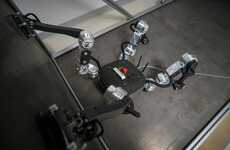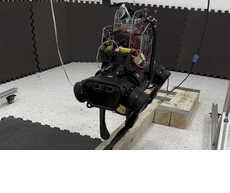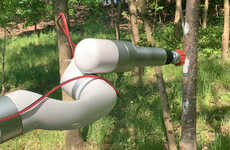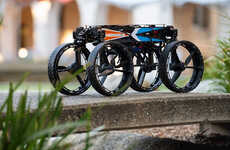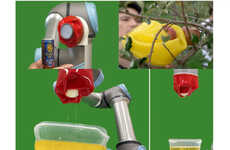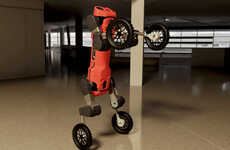
The Carnegie Mellon Robotic Snake Slithers and Grabs Objects
The Carnegie Mellon robotic snake has been developed on behalf of the academic institution. The school is now in the testing phases, launching the piece on to lighting beams and objects upon which the faux snake can cling to.
This technological snake appears much like the real animal. Its thin contours enable it to travel just as a real snake would, slithering slowly yet wrapping itself tighlty around various items aggressively.
Standing behind this project with eager support is the U.S. army. The governmental division has lent its approval to this Carnegie Mellon venture. While the reasons for its support are unknown, its ability to strangle and adhere to surfaces will likely be of use to combative ends.
This technological snake appears much like the real animal. Its thin contours enable it to travel just as a real snake would, slithering slowly yet wrapping itself tighlty around various items aggressively.
Standing behind this project with eager support is the U.S. army. The governmental division has lent its approval to this Carnegie Mellon venture. While the reasons for its support are unknown, its ability to strangle and adhere to surfaces will likely be of use to combative ends.
Trend Themes
1. Robotic Snakes - The development of robotic snakes presents disruptive innovation opportunities in fields such as search and rescue, exploration, and pipeline inspection.
2. Bio-inspired Robots - The use of bio-inspired designs for robots, like the Carnegie Mellon robotic snake, opens up possibilities for disruptive innovations in medical applications, agriculture, and hazardous environments.
3. Agile Robotics - The adoption of agile robotic systems, similar to the snake's slithering capabilities, provides disruptive innovation opportunities in industries such as manufacturing, logistics, and surveillance.
Industry Implications
1. Defense - The defense industry can leverage robotic snakes for disruptive innovations in stealth operations, reconnaissance missions, and remote surveillance.
2. Disaster Response - Robotic snakes can be utilized in disaster response industries, enabling them to reach tight spaces, navigate debris, and assist in rescue operations.
3. Energy - The energy industry can explore the use of robotic snakes to conduct inspections in complex environments, such as pipelines, power plants, and offshore facilities.
1
Score
Popularity
Activity
Freshness


